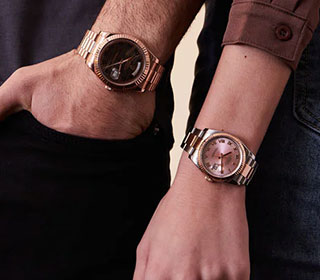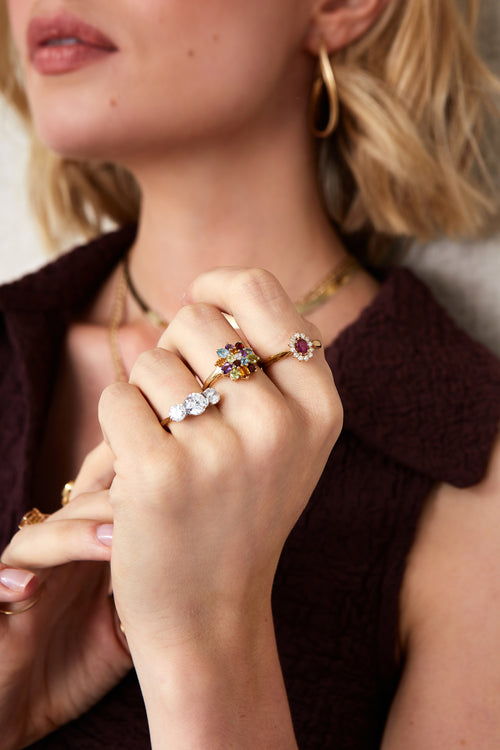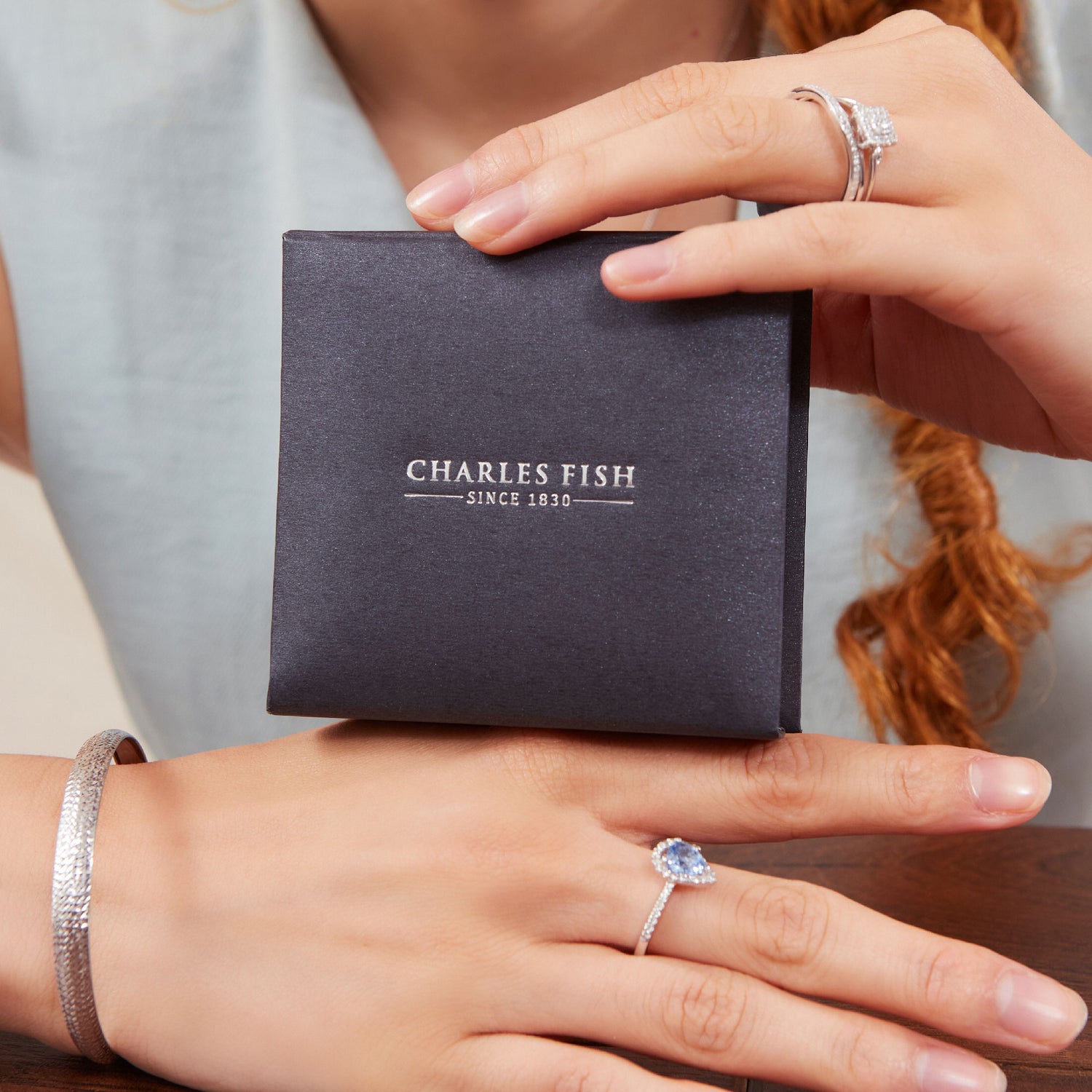What are luxury watches? What makes them special?
A luxury watch can be defined in many different ways and differs from person to person. Some say that to be considered a luxury watch the timepiece must be built by skilled watchmakers and certified as a chronometer, meaning that it has been tested and approved by Contrôle Officiel Suisse des Chronomètres (COSC), the Official Swiss Chronometer Testing Institute- This generally applies to watches made in Switzerland. To some, a luxury watch must include precious metals in the production of the watch, for example, gold or platinum. Some would define a luxury watch by its mechanism and others by its price point. With so many factors to consider, what does it all mean?
Buying a luxury watch is a significant event for most people. It could be a personal life goal, rewarding oneself or simply an appreciation for the finer things. Regardless of why, let's have a look at the world of fine timepieces, break down some of the complicated jargon and see how we can help you find your ideal luxury timepiece.
Watches mean different things to different people, some people admire the intricate craftsmanship involved, some appreciate the design and looks of a luxury watch, some appreciate both. Buying a luxury watch is a very personal decision. When it comes to choosing the perfect watch, you have many options available, let’s have a look at some of these and see which suits you best.
What types of luxury watches are there?
Watches come in many sizes, forms and with specific functions available, depending on what it is you need or would like, let’s have a look at some of the types available, where they fit in and what their functions are:
Here are some of the types of watches available:

Sports Watches
A sports watch is usually defined as a highly functional, durable and usually water-resistant watch. Sports watches should be easily legible, somewhat shockproof and very resistant to scratches and physical contact. These are great watches for daily use.
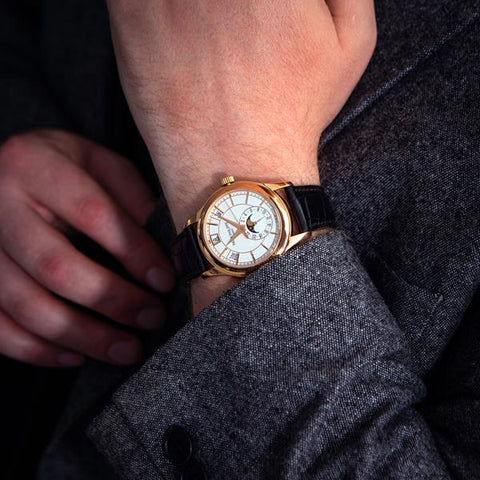
Dress Watches
These are designed to be worn with a more formal/ semi-formal environment and business wear. Simplicity and elegance are both major factors here.
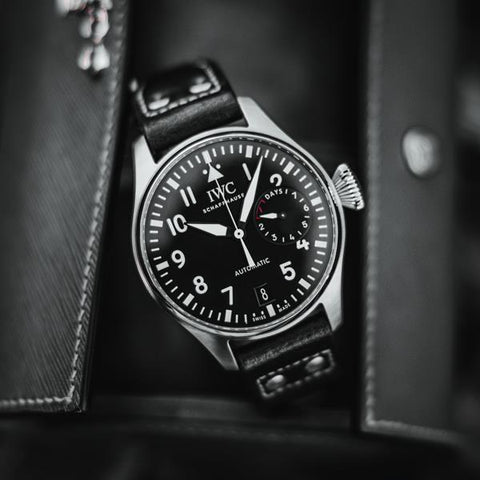
Pilot Watches
Generally larger and simpler designs with legibility in mind. These practical timepieces are easy to operate. A fantastic tool for aviators and a worthy accessory for businesspeople.
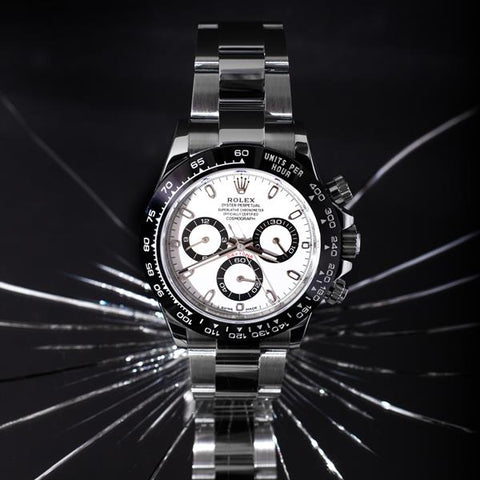
Racing Watches
There are two key features of a racing watch, a chronograph (a stopwatch function) and a tachymeter (used to measure the the speed at which the watch's wearer travels over a fixed period). These watches come in a range of designs and materials and will often come in more coloured and more eye-catching designs.

Divers Watches
Divers watches are generally larger and come with several useful features, such as a rotatable bezel to set a note of a key time, usually used by divers to know when to surface due to oxygen levels in the tank. A diver’s watch must be able to reach a depth of a minimum of 330ft, some come with a helium escape valve to automatically self-pressurize. These watches are generally incredibly durable due to the nature of their use. They are designed to be uncluttered and easy to read in low-light environments.
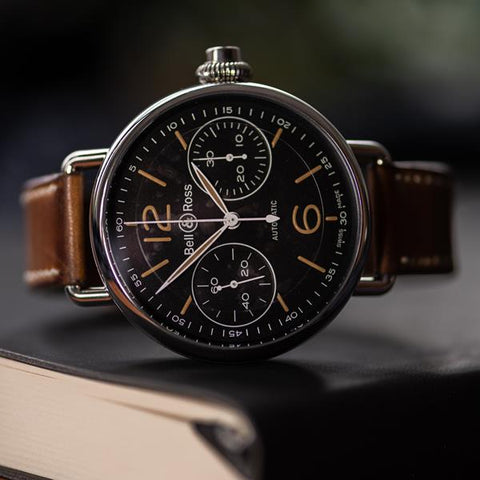
Military Watches
Rugged and easy to read.
These watches are designed for use under tough physical conditions.
You will find high levels of luminosity in the dials and a very neutral colour palette.
These watches are made in impact-resistant materials.
Which watch size would suit me best?
Again, this comes down to preference however some watches will be too big for some people. Generally, if you have a smaller wrist, you will look to be at around 40mm, give or take a couple of millimetres. Around 42-44mm is a nice size for a medium-sized wrist and anywhere up to 46mm (maybe even more) for those with a larger wrist size. As I mentioned, this is a personal thing.
Which movement do I want in my luxury watch?
Movement – the internal mechanism made up of different parts that power the watch. Essentially like the watch’s engine. A movement can be either mechanical—which means you must wind it by hand—or automatic, which means it is powered by the kinetic energy from movement. There are also quartz movements, which are battery-powered.
Let’s have a look at some of the pros and cons of each movement and see which one suits you best.
Quartz Watches
Pros - Quartz powered watches are generally the more affordable option. They are incredibly robust due to fewer moving parts. Maintenance is easier as you only need to change the battery occasionally.
Cons – These watches aren’t as smooth due to electrical pulsing and arguably lacks character because there hasn’t been the same time, effort, and attention to detail invested in making it.
Automatic Watches
Pros - These are much more convenient than a mechanical watch as there is no battery required and no winding involved. These watches are cleverly powered using the kinetic energy generated from moving around and generally operate very smoothly, in most cases this is noticeable with the hands sweeping, instead of ticking. These mechanisms are a true demonstration of refined craftsmanship.
Cons – These movements are also susceptible to damage from environmental factors such as moisture. For best accuracy, you will also need to invest in a watch winder. These are not as accurate as quartz watches and can be as expensive to maintain as a mechanical watch.
Mechanical watches
Pros -There is no need to change batteries with a mechanical movement. These mechanisms are smoother and are generally built with superior craftsmanship. Winding up the watch is a therapeutic exercise. Vintage mechanical watches are collectable and will often fetch strong prices at auction.
Cons – You do need to remember to wind it, sometimes every day. These movements are also slightly more delicate as things like moisture, dust, shock and even magnets can break a movement. Modern mechanical watches are more robust however timekeeping accuracy tends to diminish with age. It may require a tune-up every 5 years which can be costly.
Watch case materials
Stainless steel
This is one of the most popular choices of case material for watchmakers, not only for its durability but also for its lighter weight. Steel is made up of several elements, including iron, carbon chromium and nickel, making it resilient against corrosion and scratches. Stainless steel is also hypoallergenic.
Gold
Gold is the quintessential marker of quality and is the material of choice for many of the world top-end watchmakers. Gold is used for many parts of the watch, including parts of the movement. There are three main types of gold, white gold, yellow gold, rose gold.
Titanium
Titanium is a grey metal that is naturally both lighter and more durable than stainless steel, it is also hypoallergenic.
Ceramic
Watchmakers Ceramic is made from zirconium oxide (a hardened form of clay). As a material, it’s neither a metal nor a polymer, It is manufactured through a process of heating and cooling and is extremely durable. It’s also lighter than steel or titanium.
Carbon fibre
Carbon Fibre is an incredibly durable and lightweight material, composed of carbon atoms bonded together. It’s one of the most advanced materials used in modern watchmaking. Each brand has its unique carbon fibre signature.
Platinum
Platinum is 30 times rarer than gold. It’s usually 95% pure and naturally white, so it won’t fade or tarnish. Mainly used for cases on high-end luxury timepieces It’s considered the most prestigious of the precious metals. The density of platinum gives it incredible durability. It’s also hypoallergenic so ideal for those with sensitive skin.
Budgets
The price of the watch will depend on several factors, for example, the craftsmanship involved, brand, mechanism, case material, functions or complications, the strap material and many more. Watches with quartz mechanisms are available from £50, watches with automatic mechanisms will be from £400 to £10,000 onwards and mechanical watches may ask more. When looking at the luxury watch market it is important to make sure you get the right watch for you.
Establishing a budget is a good place to start when deciding which watch or watches to look at. Here are some of the finest Swiss watchmakers and how their watches compare roughly at price:
In the £3,000-5,000 mark you will find yourself looking at Breitling, Cartier, OMEGA, and TAG Heuer.
These are all beautiful mechanical watches that will stand the test of time.
At the higher end of the scale, with more complicated mechanisms and more precious metals involved, you will find the likes of IWC, Hublot, Audemars-Piquet with Rolex and Patek Philippe as the leader in Haute Horlogerie. (Translated into English, the phrase means the “high-art of watchmaking.”)
Pre-owned watches at Charles Fish
If you would like to browse our collection of stunning pre-owned watches, please click here.
To help you with the process, on every product page you’ll find a breakdown of each watch’s features, including the condition, movement and whether they come with a box and the relevant papers. We do also offer flexible finance options to help you spread the cost, you could pick up a Swiss watch for much less than you might think. We offer free insured delivery on all orders within Europe, so you can enjoy your designer watch at no extra cost.



